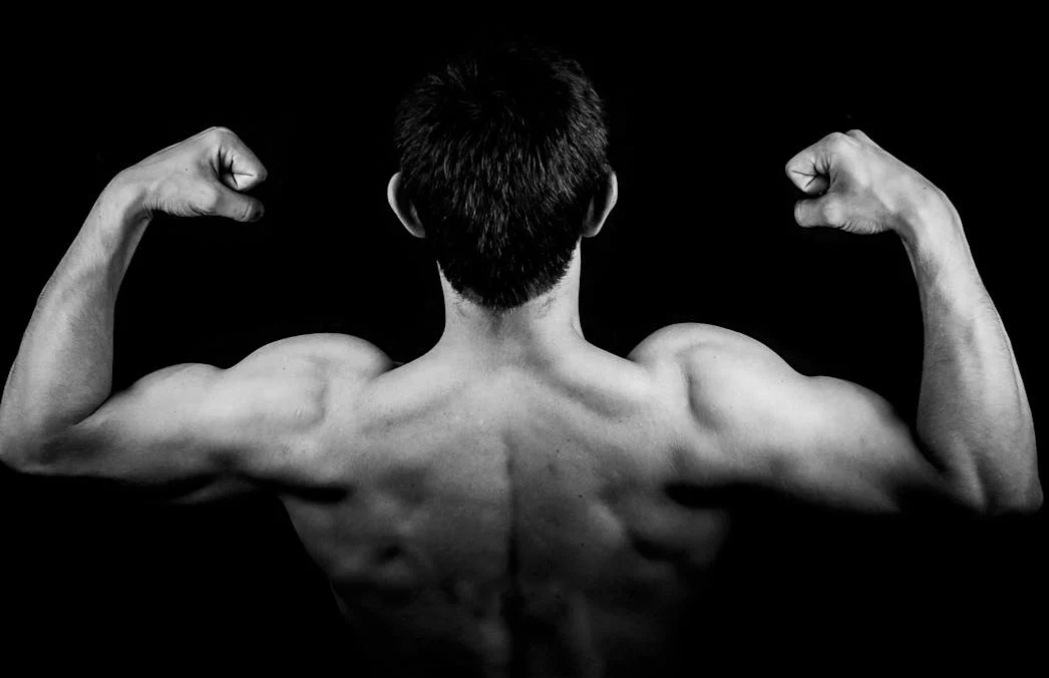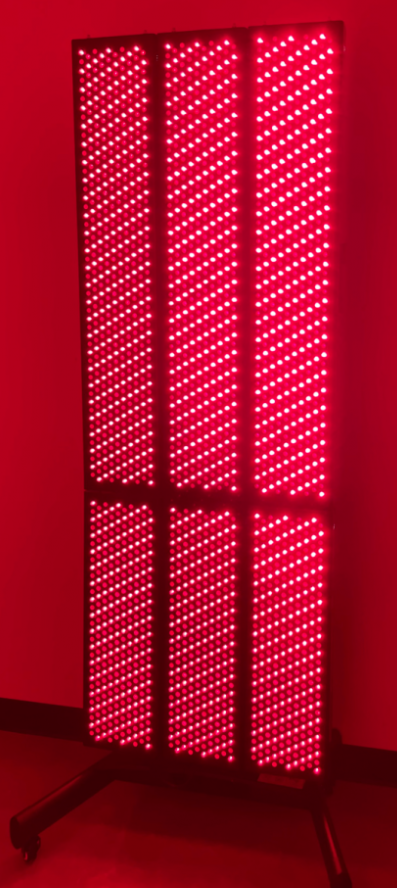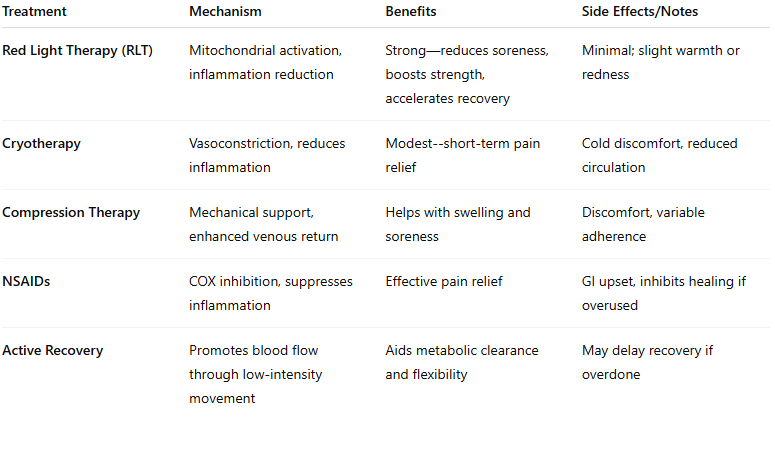Red Light Therapy for Post Workout Muscle Recovery
Red Light Therapy for Post-Workout Muscle Recovery: Boost Performance & Heal Faster
Key Benefits of Red Light Therapy (RLT) on Post-Workout Recovery
Increases ATP production, providing energy needed for muscle repair
Reduces inflammation and oxidative stress, lowering markers like CK and IL-6
Eases delayed onset muscle soreness (DOMS), leading to less post-exercise pain
Enhances microcirculation, improving blood flow and nutrient delivery
Boosts strength recovery and endurance, helping restore performance faster
Supports muscle regeneration via stem-cell activation
Outperforms cryotherapy in reducing muscle damage and promoting recovery
Safe, non-invasive, and easy to integrate, with minimal side effects
Introduction
Every athlete knows the struggle: sore muscles, tightness, and fatigue after an intense workout. While recovery methods like stretching, ice baths, and supplements help, many still look for faster, science-backed solutions.
Enter Red Light Therapy (RLT) — a clinically researched, non-invasive technology proven to accelerate muscle recovery, reduce soreness, and enhance performance. Best of all, with today’s advanced red light therapy panels, you can bring professional-level recovery right into your home gym.
👉 Looking to recover faster after workouts? Shop our premium red light therapy panels and take your training to the next level.
RLT uses red and near-infrared light to stimulate mitochondrial cytochrome c oxidase, promoting ATP production, reducing inflammation, and speeding tissue repair. This article reviews the compelling body of evidence supporting RLT as a superior method for post-workout recovery.
What is Red Light Therapy?
Red light therapy uses low-level red and near-infrared wavelengths to penetrate muscles, boost mitochondrial energy (ATP), and repair damaged tissue. This process, known as photobiomodulation, is widely studied in sports medicine and physical therapy.
Why Athletes Use Red Light Therapy for Recovery
1. ATP Boost via Mitochondrial Activation
RLT enhances mitochondrial function by stimulating cytochrome c oxidase, leading to increased ATP production and energy availability during recovery. Red light therapy works by stimulating the enzyme cytochrome c oxidase within mitochondria, enhancing the electron transport chain's efficiency.
This process increases adenosine triphosphate (ATP) production, which is essential for cellular energy and muscle repair. By accelerating ATP synthesis, RLT ensures that damaged muscle tissues have the energy they need for optimal regeneration. This mechanism is foundational in speeding up post-exercise recovery and restoring muscle function.
2. Accelerates Muscle Repair & Growth
Photobiomodulation therapy (PBMT) significantly reduces inflammation by downregulating pro-inflammatory cytokines such as IL-6 and TNF-α. Additionally, it combats oxidative stress by enhancing antioxidant enzyme activity and reducing free radical accumulation.
These combined effects protect muscle fibers from further injury and support a healthier recovery environment. As a result, athletes experience quicker resolution of tissue inflammation and less discomfort.
A study published in the American Journal of Physical Medicine & Rehabilitation found that athletes using RLT experienced significantly less delayed onset muscle soreness (DOMS) compared to control groups.
This means fewer “rest days” and more consistent training.
👉 Want faster recovery at home? Explore our RLT panels for athletes.
3. Eases Delayed Onset Muscle Soreness (DOMS)
Studies show that red light therapy effectively reduces the severity and duration of DOMS, especially in large muscle groups like the quadriceps and hamstrings. By mitigating inflammation and improving cellular repair mechanisms, RLT helps decrease post-exercise soreness that usually peaks 24 to 72 hours after activity. This relief can enhance training consistency and motivation. Athletes are able to return to performance activities with less disruption.
4. Improves Circulation & Oxygen Delivery
RLT stimulates the release of nitric oxide, which induces vasodilation and improves microcirculation in muscle tissues. Enhanced blood flow delivers oxygen and nutrients more efficiently while facilitating the removal of metabolic waste like lactic acid. These effects support faster muscle recovery and reduce swelling or stiffness. Improved circulation also contributes to an overall sense of recovery and readiness for subsequent workouts.
5. Enhances Performance & Reduces Fatigue
PBMT has been shown to enhance strength recovery by improving maximal voluntary isometric contraction (MVIC) and muscle endurance metrics such as time to exhaustion. This benefit applies to both trained athletes and untrained individuals, suggesting its broad applicability.
Red light therapy supports muscle energy reserves and reduces the accumulation of fatigue-inducing metabolites. Consequently, users experience a faster return to peak strength and endurance levels.
6. Stimulates Muscle Regeneration
Red light therapy encourages muscle regeneration by activating satellite cells, which are essential for muscle repair and growth. These stem-like cells proliferate and differentiate to replace or repair damaged muscle fibers. Additionally, RLT has been linked to improved protein synthesis and muscle fiber remodeling. This regenerative effect makes it especially useful for post-injury recovery and long-term muscular adaptation.
RLT stimulates mitochondrial activity, increasing ATP production — your cells’ energy source.
More ATP = faster repair of microtears in muscle fibers and enhanced strength gains.
7. More Effective than Cryotherapy
Meta-analyses comparing PBMT and cryotherapy have found red light therapy more effective than cryotherapy in reducing biomarkers like creatine kinase and inflammatory mediators. Unlike cryotherapy, which primarily provides short-term numbing effects, PBMT facilitates deep tissue healing and functional recovery. It also supports sustained performance improvements over a longer post-exercise window (24–96 hours). As a result, it is emerging as a superior option for evidence-based recovery protocols.
👉 Ready to recover faster? Shop our red light therapy panels now.
8. Convenient At-Home Recovery
Red light therapy is non-invasive, drug-free, and associated with very few side effects—most commonly a mild sensation of warmth. It can be administered safely in clinical environments or through FDA-cleared at-home devices. Its ease of use and consistent safety profile make it a practical recovery tool for both recreational and professional athletes. Importantly, it avoids the risks of long-term pharmaceutical interventions or invasive treatments.
How to Use a Red Light Therapy Panel After Workouts
Timing: 10–20 minutes per muscle group post-workout.
Distance: 6–12 inches from the body.
Frequency: 3–5 sessions per week for optimal recovery.
Treatment Options for Post Workout Muscle Recovery
FAQs: Red Light Therapy for Muscle Recovery
Q: How quickly will I feel results?
Many users report less soreness after the first week, with major improvements after 3–4 weeks of consistent use.
Q: Can I overuse red light therapy?
No — RLT is safe and non-invasive. Overexposure provides no extra benefit but is not harmful.
Q: Do I need a clinic or can I use it at home?
Home-use panels make professional recovery affordable and convenient — without paying for session fees.
Conclusion & Next Steps
Red light therapy isn’t just a wellness trend — it’s a science-backed recovery tool trusted by athletes worldwide. From reducing soreness to boosting endurance, it’s one of the smartest investments you can make in your training.
✅ Don’t let sore muscles slow you down.
👉 Order your red light therapy panel today and experience faster recovery from the comfort of home.
Red light therapy is a scientifically validated, non-invasive tool for enhancing post-workout muscle recovery. It addresses key recovery mechanisms—energy production, inflammation, circulation, and tissue repair—often outperforming traditional modalities like cryotherapy.
With minimal side effects and easy implementation, RLT is an ideal complement to training routines. For best results, RLT should be applied shortly before or immediately after exercise, at doses of 20–60 J/cm² per site, tailored to the device and athletic goals.
Check out our most popular blogs on red light therapy to save you time and money on your next purchase with Medford Red Light Therapy:
Peer-Reviewed References
de Oliveira AR, Vanin AA, Miranda EF, et al. Effect of pre-exercise PBMT on muscle recovery and performance. Lasers Med Sci. 2017;32(2):429–437.
Choi Seung Jun. Journal of Exercise Rehabilitation. 4. Vol. 10. Korean Society of Exercise Rehabilitation; Cellular mechanism of eccentric-induced muscle injury and its relationship with sarcomere heterogeneity; pp. 200–204. [PubMed]
Eccentric muscle damage: mechanisms of early reduction of force. Allen D. G. Mar;2001 Acta Physiologica Scandinavica. 171(3):311–319. doi: 10.1046/j.1365-201x.2001.00833.x. doi: 10.1046/j.1365-201x.2001.00833.x. [PubMed] Leal Junior ECP, Lopes-Martins RAB, Frigo L, et al. Phototherapy improves skeletal muscle recovery. Lasers Surg Med. 2009;41(8):672–678.
Ferraresi C, de Sousa MV, Neves M, et al. PBMT improves muscle performance and recovery. Lasers Med Sci. 2015;30(2):925–935.
Muscle damage from eccentric exercise: mechanism, mechanical signs, adaptation and clinical applications. Proske U., Morgan D. L. Dec;2001 The Journal of Physiology. 537(2):333–345. doi: 10.1111/j.1469-7793.2001.00333.x. doi: 10.1111/j.1469-7793.2001.00333.x. [PubMed]
Does exercise-induced muscle damage play a role in skeletal muscle hypertrophy? Schoenfeld Brad J. May;2012 Journal of Strength and Conditioning Research. 26(5):1441–1453. doi: 10.1519/jsc.0b013e31824f207e. doi: 10.1519/jsc.0b013e31824f207e. [DOI] [PubMed] Cruz AJM, Barreira AA, Pinto RA. PBMT stimulates satellite cells post-exercise. J Photochem Photobiol B. 2020;207:111896.
Fisher SR, Rigby JH, Mettler JA, McCurdy KW. PBMT vs cryotherapy—post-exercise. J Sport Reh. 2018;27(4):377–384. Dupuytren Research Group
Nunes EA, de Gomes M, et al. PBMT for muscle recovery in athletes: RCT. Sports Med Open. 2021;7:15.
da Silva Alves Mariana Agnes, Pinfildi Carlos Eduardo, Neto Luiz Nilsen, Lourenço Rebeca Palomo, de Azevedo Paulo Henrique Silva Marques, Dourado Victor Zuniga. Lasers in Medical Science. 6. Vol. 29. Springer Science and Business Media LLC; Acute effects of low-level laser therapy on physiologic and electromyographic responses to the cardiopulmonary exercise testing in healthy untrained adults; pp. 1945–1951. [PubMed]
Low-level laser therapy (LLLT) in human progressive-intensity running: effects on exercise performance, skeletal muscle status, and oxidative stress. De Marchi Thiago, Leal Junior Ernesto Cesar Pinto, Bortoli Celiana, Tomazoni Shaiane Silva, Lopes-Martins Rodrigo Álvaro Brandão, Salvador Mirian. 2012Lasers in Medical Science. 27(1):231–236. doi: 10.1007/s10103-011-0955-5. doi: 10.1007/s10103-011-0955-5. [PubMed] Lanferdini FJ, Baroni BM, Lazzari CD, et al. PBMT improves cycling performance & VO₂ kinetics. J Funct Morphol Kinesiol. 2023;8(4):144. MDPI
De Marchi T, Schmitt VM, Machado GP, et al. PBMT vs cryotherapy clinical trial. Lasers Med Sci. 2017;32:429–437. MDPI
vanin AA, de Oliveira AR, et al. Optimizing PBMT dose for skeletal muscle. Photobiomodul Photomed Laser Surg. 2020;38(2):82–90.
de Paiva Paulo Roberto Vicente, Tomazoni Shaiane Silva, Johnson Douglas Scott, Vanin Adriane Aver, Albuquerque-Pontes Gianna Móes, Machado Caroline dos Santos Monteiro, Casalechi Heliodora Leão, de Carvalho Paulo de Tarso Camillo, Leal-Junior Ernesto Cesar Pinto. Lasers in Medical Science. 9. Vol. 31. Springer Science and Business Media LLC; Photobiomodulation therapy (PBMT) and/or cryotherapy in skeletal muscle restitution, what is better? A randomized, double-blinded, placebo-controlled clinical trial; pp. 1925–1933. [PubMed]
Effects of low-level laser therapy applied before or after plyometric exercise on muscle damage markers: randomized, double-blind, placebo-controlled trial. Fritsch Carolina Gassen, Dornelles Maurício Pinto, Severo-Silveira Lucas, Marques Vanessa Bernardes, Rosso Isabele de Albuquerque, Baroni Bruno Manfredini. Sep 21;2016 Lasers in Medical Science. 31(9):1935–1942. [DOI]
Borsa PA, Camargo CH, Leal Junior ECP, et al. PBMT in sports: narrative review. Life. 2021;11(12):1339.
Wong RK, Lathrop JM, Regan RF. PBMT effects on exercise-induced muscle damage. IJSPT. 2021;16(3):1–8.
Effects of low-level laser therapy (LLLT) in the development of exercise-induced skeletal muscle fatigue and changes in biochemical markers related to postexercise recovery. Leal Ernesto Cesar Pinto, Jr., Lopes-Martins Rodrigo Álvaro BrandÃo, Frigo Lucio, De Marchi Thiago, Rossi Rafael Paolo, de Godoi Vanessa, Tmazoni Shaiane Silvato, Silva Daniela Perin, Basso Maira, Filho Pedro Lotti, de Valls Corsetti Francisco, Iversen Vegard V., Bjordal Jan Magnus. Aug;2010 Journal of Orthopaedic & Sports Physical Therapy. 40(8):524–532. [Google Scholar]
Time response of photobiomodulation therapy on muscular fatigue in humans. Rossato Mateus, Dellagrana Rodolfo A., Sakugawa Raphael L., Lazzari Caetano D., Baroni Bruno M., Diefenthaeler Fernando. Nov;2018 Journal of Strength and Conditioning Research. 32(11):3285–3293. doi: 10.1519/jsc.0000000000002339. doi: 10.1519/jsc.0000000000002339. [DOI] [PubMed]
Hamblin MR. Mechanisms of PBMT and oxidative stress reduction. IEEE J Sel Top Quantum Electron. 2016;22(3):7000417.
Use of low-level laser therapy (808 nm) to muscle fatigue resistance: a randomized double-blind crossover trial. de Brito Vieira Wouber Hérickson, Bezerra Raphael Machado, Queiroz Renata Alencar Saldanha, Maciel Nícia Farias Braga, Parizotto Nivaldo Antonio, Ferraresi Cleber. Dec;2014 Photomedicine and Laser Surgery. 32(12):678–685. doi: 10.1089/pho.2014.3812. doi: 10.1089/pho.2014.3812. [Google Scholar]
Effects of pre- or post-exercise low-level laser therapy (830 nm) on skeletal muscle fatigue and biochemical markers of recovery in humans: double-blind placebo-controlled trial. dos Reis Filipe Abdalla, da Silva Baldomero Antonio Kato, Laraia Erica Martinho Salvador, de Melo Rhaiza Marques, Silva Patrícia Henrique, Leal-Junior Ernesto Cesar Pinto, de Carvalho Paulo de Tarso Camillo. Feb;2014 Photomedicine and Laser Surgery. 32(2):106–112. [PubMed] [Google Scholar]
Frontiersin Physiology. PBMT had no effect after sprint training. Front Physiol. 2018;9:1948.
Eisner K, et al. Optimal timing window for PBMT before exercise. BMC Sports Sci Med Rehabil. 2020;12:79.
Influence of tart cherry juice on indices of recovery following marathon running. Howatson G., McHugh M. P., Hill J. A., Brouner J., Jewell A. P., Van Someren K. A., Shave R. E., Howatson S. A. 2010Scandinavian Journal of Medicine & Science in Sports. 20(6):843–852. doi: 10.1111/j.1600-0838.2009.01005.x. doi: 10.1111/j.1600-0838.2009.01005.x. [PubMed]
Metabolic consequences of exercise-induced muscle damage. Tee Jason C, Bosch Andrew N, Lambert Mike I. 2007Sports Medicine. 37(10):827–836. doi: 10.2165/00007256-200737100-00001. doi: 10.2165/00007256-200737100-00001. [PubMed]
Clinical and scientific recommendations for the use of photobiomodulation therapy in exercise performance enhancement and post-exercise recovery: current evidence and future directions. Leal-Junior Ernesto Cesar Pinto, Lopes-Martins Rodrigo Álvaro Brandão, Bjordal Jan Magnus. Jan;2019 Brazilian Journal of Physical Therapy. 23(1):71–75. doi: 10.1016/j.bjpt.2018.12.002. doi: 10.1016/j.bjpt.2018.12.002. [PubMed]
Photobiomodulation therapy on physiological and performance parameters during running tests: dose-response effects. Dellagrana Rodolfo A., Rossato Mateus, Sakugawa Raphael L., Baroni Bruno M., Diefenthaeler Fernando. Oct;2018 Journal of Strength and Conditioning Research. 32(10):2807–2815. doi: 10.1519/jsc.0000000000002488. doi: 10.1519/jsc.0000000000002488. [PubMed]
Miranda Eduardo Foschini, Tomazoni Shaiane Silva, de Paiva Paulo Roberto Vicente, Pinto Henrique Dantas, Smith Denis, Santos Larissa Aline, de Tarso Camillo de Carvalho Paulo, Leal-Junior Ernesto Cesar Pinto. Lasers in Medical Science. 4. Vol. 33. Springer Science and Business Media LLC; When is the best moment to apply photobiomodulation therapy (PBMT) when associated to a treadmill endurance-training program? A randomized, triple-blinded, placebo-controlled clinical trial; pp. 719–727. [PubMed] [Google Scholar]
Infrared low-level laser therapy (photobiomodulation therapy) before intense progressive running test of high-level soccer players: effects on functional, muscle damage, inflammatory, and oxidative stress markers-a randomized controlled trial. Tomazoni Shaiane Silva, Machado Caroline dos Santos Monteiro, De Marchi Thiago, Casalechi Heliodora Leão, Bjordal Jan Magnus, de Carvalho Paulo de Tarso Camillo, Leal-Junior Ernesto Cesar Pinto. Nov 16;2019 Oxidative Medicine and Cellular Longevity. 2019:1–12. [PubMed]
Identifying dosage effect of light-emitting diode therapy on muscular fatigue in quadriceps. Hemmings Thomas J., Kendall Kristina L., Dobson John L. Feb;2017 Journal of Strength and Conditioning Research. 31(2):395–402. [DOI]
Effect of 655-nm low-level laser therapy on exercise-induced skeletal muscle fatigue in humans. Leal Junior Ernesto Cesar Pinto, Lopes-Martins Rodrigo Álvaro Brandão, Dalan Francis, Ferrari Maurício, Sbabo Fernando Montanari, Generosi Rafael Abeche, Baroni Bruno Manfredini, Penna Sócrates Calvoso, Iversen Vegard V., Bjordal Jan Magnus. Oct;2008 Photomedicine and Laser Surgery. 26(5):419–424. [DOI] [PubMed]
Light-emitting diode phototherapy improves muscle recovery after a damaging exercise. Borges L.S., Cerqueira M.S., dos Santos Rocha J.A.., et al. 2014Lasers Med Sci. 29:1139–1144. [PubMed]
Near-infrared light therapy to attenuate strength loss after strenuous resistance exercise. Larkin-Kaiser Kelly A., Christou Evangelos, Tillman Mark, George Steven, Borsa Paul A. Jan 1;2015 Journal of Athletic Training. 50(1):45–50. [PubMed]
Disclaimer: The Medford Red Light Therapy website is designed and intended for general informational purposes only and does not constitute the practice of medicine, nursing or other professional health care services, including the giving of medical advice, and no doctor/patient relationship is formed. The use of information on this website is at the user’s own risk. Results may vary by individual. The content of this website is not intended to be a substitute for professional medical advice, diagnosis, or treatment. Users should not disregard or delay in obtaining medical advice for any medical condition they may have and should seek the assistance of their health care professionals for any such conditions.




